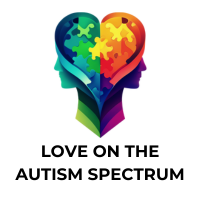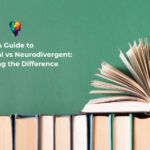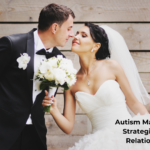Imagine constantly trying to adapt to a world that doesn’t understand you. For many autistic adults, this is a daily reality, often resulting in a debilitating condition known as autistic burnout. In this blog post, we’ll delve into the complexities of autistic burnout, its causes, and how to recognize its symptoms. We’ll also explore strategies for preventing and managing burnout, as well as the crucial role society plays in accommodating the unique needs of autistic individuals.
Key Takeaways
Autistic burnout is a serious chronic condition caused by life stress, mismatched expectations and inadequate support systems.
Recognizing symptoms such as exhaustion, sensory overload and decline in cognitive skills can help individuals seek support.
Strategies for preventing/managing autistic burnout include establishing boundaries, self-care and building a supportive network.
The Reality of Autistic Burnout

Many people often ask to define autistic burnout, which is a chronic condition experienced by autistic individuals, including an autistic person who has experienced autistic burnout, due to the challenges of navigating a neurotypical world. Experiencing autistic burnout results from a combination of life stressors and lack of support. Often characterized by pervasive, long-term exhaustion, loss of function, and reduced tolerance to stimulus, autistic burnout can have a significant impact on an individual’s life and mental health.
The Struggle in a Neurotypical World
When autistic individuals attempt to conceal their traits and conform to societal norms, it can lead to immense exhaustion, fatigue, and energy depletion. This strain can make them more susceptible to burnout, as they continuously mask their autistic traits and disregard their own needs to fit into a neurotypical world.
Burnout can be prevented through unmasking – embracing one’s autistic qualities, which allows individuals to save energy and express themselves more authentically. However, the responsibility doesn’t solely lie with the autistic individual, as society plays a crucial role in accommodating their needs and promoting autism acceptance.
Causes of Autistic Burnout
Potential causes of autistic burnout include chronic life stress, mismatched expectations, and inadequate support systems, leading to physical and mental fatigue. Chronic stress is a condition of sustained mental and emotional tension caused by challenging circumstances, which can sometimes lead to a mental health crisis.
Inadequate support systems, such as lack of understanding or acceptance from family and friends, limited access to resources, or insufficient comprehension of the individual’s needs, can affect many autistic adults. Autistic burnout differs from other forms of burnout in that it is a consequence of continuously concealing autistic traits, disregarding autistic requirements, and being denied accommodation and comprehension in neurotypical spaces.
Recognizing the Symptoms of Autistic Burnout

Early intervention and support hinge upon the timely recognition of autistic burnout symptoms. Symptoms can include:
Chronic exhaustion
Loss of skills
Reduced tolerance to stimuli
Feeling like one can no longer cope
Physical exhaustion
Depressive symptoms
Difficulty with skills such as speech and language and executive function
Heightened sensory sensitivity
Comprehending these signs empowers individuals and their support networks to alleviate austistic burnout burden proactively and devise prevention and management strategies.
Chronic Exhaustion and Fatigue
Chronic exhaustion and fatigue are common symptoms of autistic burnout, significantly impacting daily functioning, relationships, and mental health. They can lead to:
A lack of interest and difficulty engaging in special interests
Difficulty in maintaining relationships
Difficulty with simple tasks such as brushing one’s teeth
Challenges with masking
Awareness of these symptoms enables individuals to manage their energy levels aptly and solicit support when necessary.
Sensory Overload and Heightened Sensitivities
Sensory overload and heightened sensitivities during autistic burnout can lead to meltdowns, shutdowns, and increased difficulty in managing daily life. Anxiety, irritability, restlessness, difficulty concentrating, and physical unease are common indications of sensory overload, which an overwhelming amount of sensory input can trigger.
Managing sensory overload and heightened sensitivities during autistic burnout requires establishing healthy boundaries, practicing self-care, and seeking mental health support.
Decline in Cognitive and Life Skills
Autistic burnout can lead to a decrease in cognitive and life skills, making activities that necessitate executive functioning skills and self-care increasingly challenging. This decline can manifest in difficulty with memory, language, and other cognitive abilities, as well as challenges in managing basic self-care tasks and an increase in repetitive behaviors.
Identifying these symptoms and seeking suitable support can assist individuals in regaining and maintaining their skills and well-being.
Strategies for Preventing and Managing Autistic Burnout

Establishing healthy boundaries, prioritizing self-care, and building a supportive network are effective strategies for preventing and managing autistic burnout. Implementing these strategies enables autistic individuals to cope more effectively with the challenges of living in a neurotypical world, diminish the risk of burnout, and sustain a healthier life balance.
Establishing Healthy Boundaries
Setting appropriate limits on obligations, delegating tasks, and balancing work and personal life are essential to establishing healthy boundaries. These boundaries safeguard an individual’s physical, emotional, and mental well-being while also improving self-respect and self-esteem.
Setting healthy boundaries allows individuals to manage their energy levels more effectively, mitigate stress, and avert burnout.
Self-Care and Mental Health Support
Self-care and mental health support are essential for autistic individuals experiencing burnout. Engaging in activities such as:
Yoga
Meditation
Journaling
Spending time in nature
Engaging in activities that promote as healthy a lifestyle as possible can help reduce stress and anxiety, increase self-esteem, and improve physical health.
Additionally, seeking professional help from mental health professionals, support groups, or online resources can provide valuable guidance and support during times of burnout.
Building a Supportive Network
Connecting with other neurodivergent individuals, sharing experiences, and fostering understanding among neurotypical people are key components of building a supportive network. This network can provide a sense of community, understanding, and acceptance, helping to reduce feelings of isolation and loneliness.
Cultivating a supportive network enables autistic individuals to navigate the challenges of a neurotypical world more effectively and find the requisite support during burnout episodes.
The Role of Society in Accommodating Autistic Needs

Society plays a crucial role in accommodating autistic needs by:
Promoting autism acceptance
Providing reasonable adjustments
Creating inclusive environments
Extending support to autistic individuals
These actions can help society ensure equal opportunity and resource access for everyone.
Promoting Autism Acceptance
Increasing awareness, understanding, and empathy towards autistic individuals and their unique needs is essential for promoting autism acceptance. By educating the public, advocating for the rights of autistic individuals, and creating an environment that is welcoming and supportive, society can help reduce stigma and foster a more inclusive atmosphere for all.
Providing Reasonable Adjustments
Creating inclusive environments, offering flexible work arrangements, and implementing necessary accommodations for autistic individuals are essential for providing reasonable adjustments. By granting access to assistive technology, establishing sensory-friendly spaces, and offering flexible scheduling, society can help autistic individuals reach their potential and thrive in their daily lives.
Personal Stories: Experiences with Autistic Burnout
Personal stories of autistic burnout provide insight into the experiences of overcoming burnout and the lessons learned. These stories highlight:
The importance of support
The importance of self-care
The importance of understanding
The resilience and determination of those who have faced burnout and emerged stronger
Overcoming Burnout
Sharing personal experiences allows individuals who have surmounted burnout to inspire and uplift others encountering similar obstacles. Managing stress, setting boundaries, and building a supportive network are essential components of overcoming burnout.
These personal accounts provide readers with valuable insights into effective strategies for preventing and managing autistic burnout.
Lessons Learned
Reflecting on the experiences of autistic individuals and the importance of support, self-care, and understanding, we can learn valuable lessons on how to better accommodate autistic needs and promote acceptance. These personal stories offer a glimpse into the challenges faced by autistic individuals and the resilience they display in overcoming burnout.
Summary
In conclusion, autistic burnout is a complex and often misunderstood condition that affects many autistic adults. By recognizing the symptoms, understanding the causes, and implementing strategies for prevention and management, we can better support autistic individuals in their daily lives. Society plays a vital role in promoting autism acceptance and accommodating autistic needs, ultimately fostering a more inclusive and understanding world for all.
Frequently Asked Questions
What does autism burnout feel like?
Autistic burnout can manifest as extreme exhaustion, increased sensory sensitivities, loss of executive functioning skills, difficulty managing emotions, difficulty adapting to change, and depression. This debilitating combination can leave you feeling overwhelmed and drained.
How long can autistic burnout last?
Autistic burnout can last for weeks, months, or even years, with some people never fully recovering.
Can autism cause burnout?
Autistic people are at a higher risk for burnout due to heightened expectations and the need for more complex skills during significant life transitions. Burnout can occur when transitioning into new stages of life, such as a new job or early adulthood.
What is autistic burnout?
Autistic burnout is a chronic condition experienced by autistic individuals due to the cumulative effects of navigating a neurotypical world without adequate support.
What are the physical symptoms of autistic burnout?
Autistic burnout is characterized by chronic exhaustion, loss of skills, reduced tolerance to stimuli, difficulty with executive function, and heightened sensory sensitivity. Physical symptoms can include both exhaustion and depressive symptoms.






